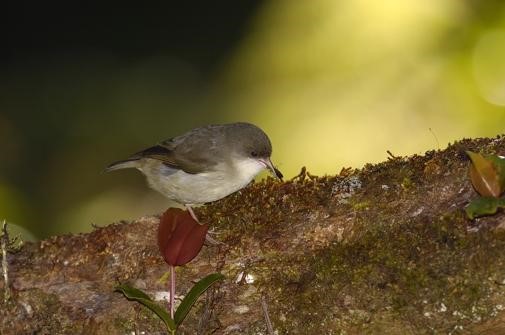Birdfinding.info ⇒ Rare, endangered, declining, and inconspicuous. For decades, it was range-restricted but fairly common at Koke’e State Park and above, but since the early 2000s it has become more and more of a genuine rarity, continuing its steady, unremitting decline of over a century. Through the 2010s, it has been reported sporadically along the Pihea and Alakai Swamp Trails, but more reliably in the upper reaches of the Alakai Plateau.
Akikiki
Oreomystis bairdi
Endemic to Kauai, where it is essentially confined to Koke’e State Park and the Alakai Plateau.
In the early 1900s, it inhabited forests throughout Kauai and was considered common above 300 m. Over the course of the century, it retreated to higher elevations, evidently due to susceptibility to insect-borne diseases. Around 1970, already confined to the Koke’e / Alakai region, the population was estimated at 6,800. In 2007 the estimate was 1,312, and by 2012 it had decreased to 468.
Identification
A small, mousy, short-tailed, wrenlike honeycreeper with brownish-gray upperparts, whitish-gray underparts, pink legs, and a short, decurved pink bill.
The sexes are similar, but immatures differ in having an extensively whitish face.

Akikiki. (Mohihi Ridge, Alaka’i Wilderness Preserve, Kauai, Hawaii; October 13, 2019.) © Bret Mossman

Akikiki. (Mohihi Ridge, Alaka’i Wilderness Preserve, Kauai, Hawaii; October 13, 2019.) © Bret Mossman
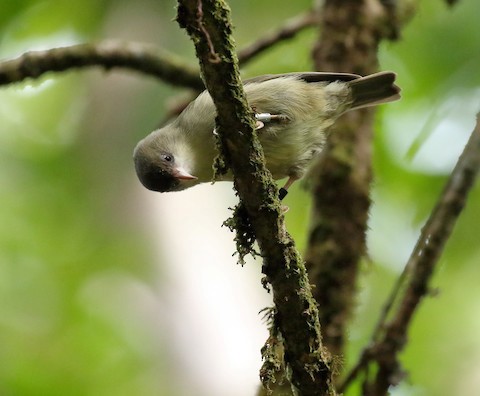
Akikiki. (Mohihi Ridge, Alaka’i Wilderness Preserve, Kauai, Hawaii; October 13, 2019.) © Bret Mossman
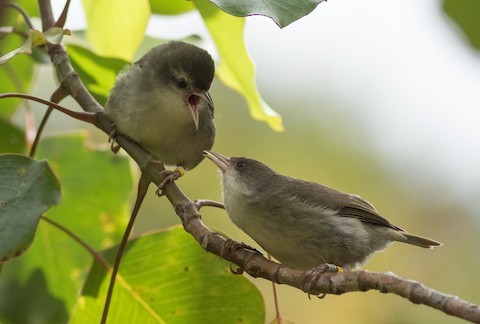
Akikiki, pair courting. (Alaka’i Wilderness Preserve, Kauai, Hawaii; March 7, 2019.) © Joachim Bertrands
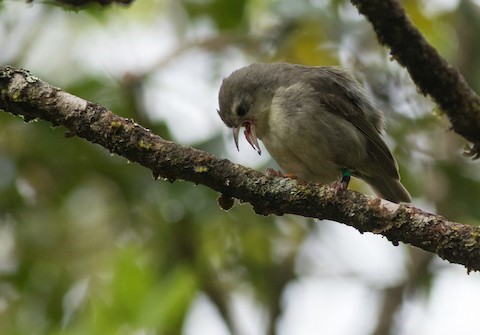
Akikiki. (Alaka’i Wilderness Preserve, Kauai, Hawaii; March 6, 2019.) © Joachim Bertrands
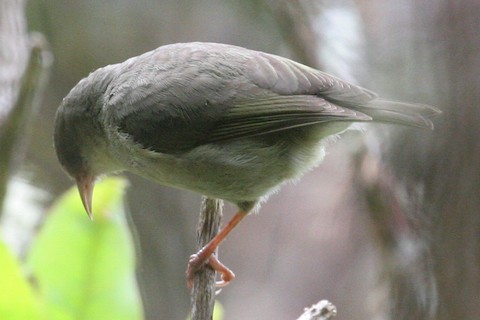
Akikiki. (Halepa’akai Stream, Alaka’i Wilderness Preserve, Kauai, Hawaii; May 22, 2006.) © Eric VanderWerf
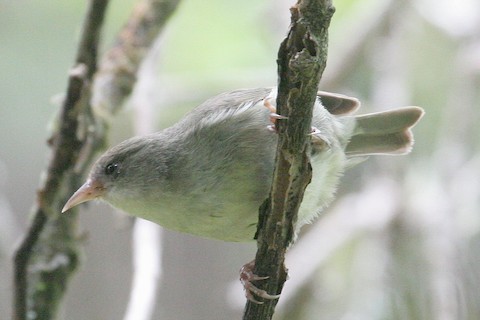
Akikiki. (Halepa’akai Stream, Alaka’i Wilderness Preserve, Kauai, Hawaii; May 22, 2006.) © Eric VanderWerf
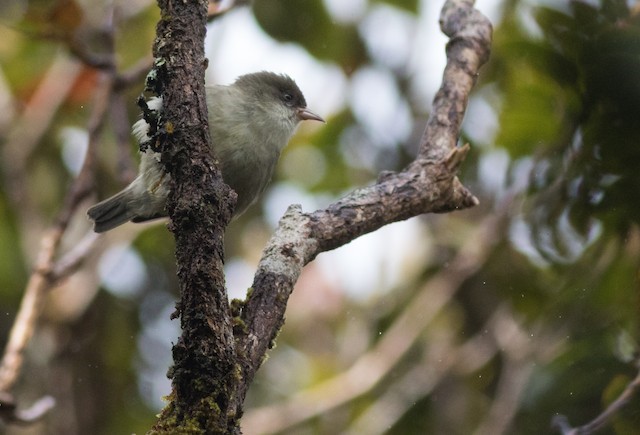
Akikiki. (Alaka’i Wilderness Preserve, Kauai, Hawaii; March 11, 2019.) © Joachim Bertrands
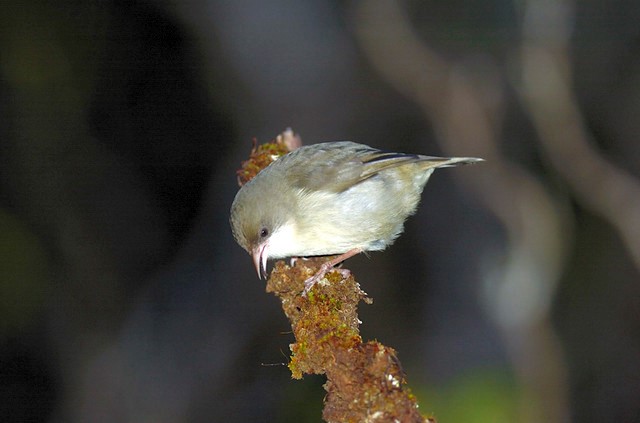
Akikiki. (Alaka’i Wilderness Preserve, Kauai, Hawaii; October 10, 2004.) © Jim Denny
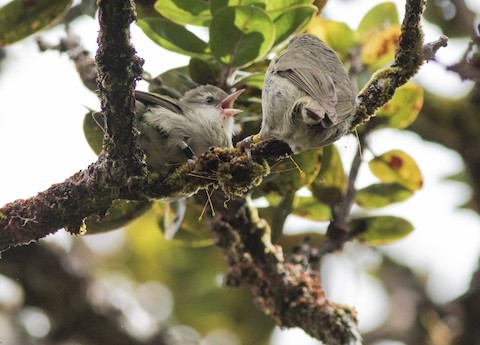
Akikiki, pair courting. (Alaka’i Wilderness Preserve, Kauai, Hawaii; March 7, 2019.) © Joachim Bertrands
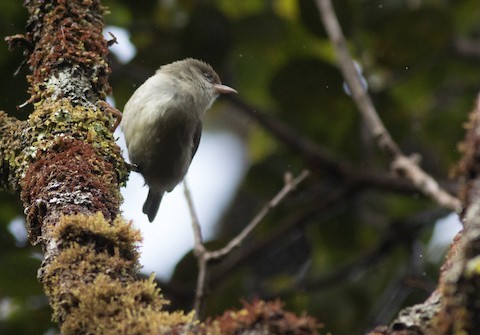
Akikiki. (Alaka’i Wilderness Preserve, Kauai, Hawaii; March 11, 2019.) © Joachim Bertrands
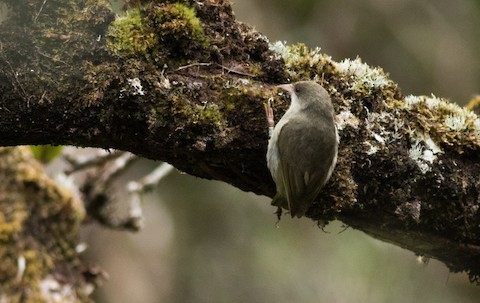
Akikiki. (Alaka’i Wilderness Preserve, Kauai, Hawaii; March 6, 2019.) © Joachim Bertrands

Akikiki. (Alaka’i Wilderness Preserve, Kauai, Hawaii; May 23, 2015.) © Patrick J. Blake
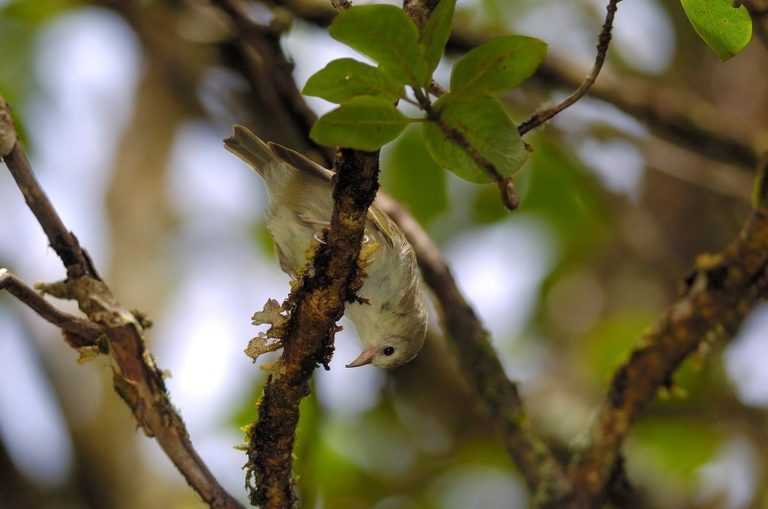
Akikiki, immature. (Alaka’i Wilderness Preserve, Kauai, Hawaii; September 21, 2004.) © Jim Denny
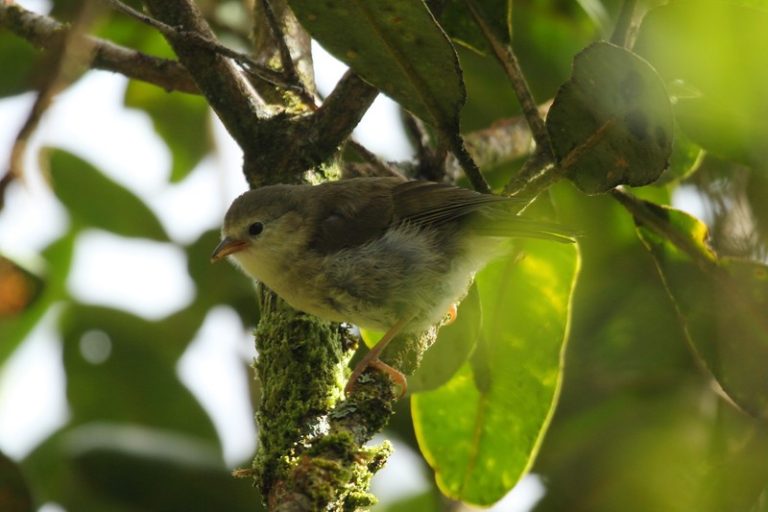
Akikiki, immature. (Alaka’i Wilderness Preserve, Kauai, Hawaii; June 7, 2015.) © Patrick J. Blake
Voice. Most calls are squeaky single notes (confusingly similar to the calls of two other Kauai endemic honeycreepers, the Anianiau and the Akeke’e): Song is a rarely heard “descending trill that trails off at the end.” (Pratt 2005)
Notes
Monotypic species. Formerly known as the Kauai Creeper.
IUCN Red List Status: Critically Endangered.
References
BirdLife International. 2018. Oreomystis bairdi. The IUCN Red List of Threatened Species 2018: e.T22720809A130843089. https://dx.doi.org/10.2305/IUCN.UK.2018-2.RLTS.T22720809A130843089.en. (Accessed May 9, 2020.)
eBird. 2020. eBird: An online database of bird distribution and abundance. Cornell Lab of Ornithology, Ithaca, N.Y. http://www.ebird.org. (Accessed May 9, 2020.)
Pratt, H.D. 2005. The Hawaiian Honeycreepers: Drepanidinae. Oxford University Press.
Pratt, H.D., and C.J. Sharpe. 2020. Akikiki (Oreomystis bairdi). In Handbook of the Birds of the World Alive (J. del Hoyo, A. Elliott, J. Sargatal, D.A. Christie, and E. de Juana, eds.). Lynx Edicions, Barcelona. https://www.hbw.com/node/61437. (Accessed May 9, 2020.)
Pyle, R.L., and P. Pyle. 2017. The Birds of the Hawaiian Islands: Occurrence, History, Distribution, and Status. Version 2 (January 1, 2017). http://hbs.bishopmuseum.org/birds/rlp-monograph/. B.P. Bishop Museum, Honolulu, Hawaii.
Xeno-Canto. 2020. Akikiki – Oreomystis bairdi. https://www.xeno-canto.org/species/Oreomystis-bairdi. (Accessed May 9, 2020.)
